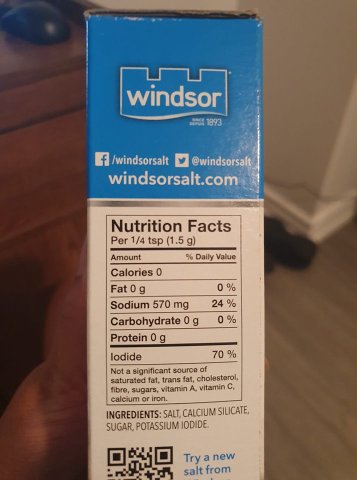
Now, there are people who are so strict about eliminating sugar from their diet that even if a product contains 0.0001% sugar, it is unacceptable.
Of course, even natural foods like lemons and cucumbers contain some naturally occurring sugars at higher concentrations than 0.0001% (2.5% and 1.7% respectively) so you can't cut out sugar out from your diet completely (without it becoming very boring - even butter has trace amounts of sugar, for example).
But anyway, out of curiosity I decided to try to estimate how much salt there was in my sugar.
My first step was the nutritional information - 0g carbs per 1.5g. We know that under FDA regulations, if a food has under 0.5g of carbohydrates, the nutritional information may advertise it as having 0g of carbohydrates. So we know that my salt at most has 0.4999g of sugar per 1.5g.
Next, I went to the ingredients list. Ingredients must be listed in order of proportion - i.e. there's more of the first ingredient in the list than the second, more of the second than the third and so on. We can see that sugar is the third item on the list, so we know there is under a third of sugar in my salt at most.
However, we can see that the second ingredient is calcium silicate (an anti caking agent). My salt cannot be a third calcium silicate, or it wouldn't taste like salt.
I went to look up how much calcium silicate salt typically has. Under FDA regulations, salt can contain up to 2% calcium silicate. So we know there is at most 2% sugar in my salt.
If this is still too much sugar for you, you can always buy a different brand of salt (my concerns about this salt are about ease of pouring, but that's another story for another time).